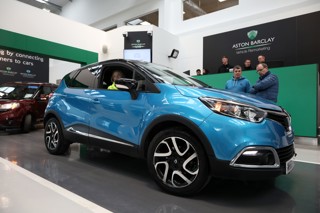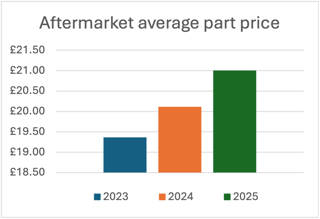Used car values declined by 2.1% during October and have seen a 2% dip so far in November but there is "no cause for alarm", according to Cap HPI.
The valuations experts have stated that the current shift from a price growth trend – also identified by Auto Trader and Indicata – is not the result of COVID-19 ‘Lockdown 2’ but a “seasonal readjustment” following a bumper few months for car dealers.
November’s decline equates to around £450 in total on a typical three-year-old car, according to Cap HPI, but head of valuations, Derren Martin, said that retail values had so far remained relatively steady.
Martin said: “With pent-up demand from the first UK lockdown and consumers buying to avoid public transport both now declining, trade buyers are wary of paying previous high prices for cars that may now sit on their forecourts for longer and will potentially need to be reduced. This has led to a decline in trade prices across the board.
“It is important to remember that, when comparing the same type of car at the same age and mileage point today to a year ago, prices are some 5% ahead of where they were, when normally we expect a decline, as models deflate in price whilst moving through their lifecycle.
“This upward movement that the market has experienced is not unprecedented, but history shows us that it is generally unsustainable.”
Cap HPI said that, with volumes of cars being sold in the trade 15% lower than prior to the latest lockdown, warned that thisthe drop in prices seen in the trade sector could eventually filter through to retail prices.
While Cap HPI and Auto Trader have urged calm in the past – with pricing movements actively discouraged during lockdown periods to avoid a weakening of the market – Indicata last week suggested that retailers should now reprice and sell overage stock “immediately” in a bid to get on the front foot ahead of an anticipated easing of COVID-19 trading restrictions in the New Year.
Martin said that there was “no cause for alarm”, however. He said: “Invariably trade prices adjust earlier than retail ones, so it is essential to track what to pay in the wholesale market.
“With many smaller models of cars around 10% higher in value than they were a year ago, some realignment was always likely and the final quarter of the year is generally the time when values drop.
“We see no cause for alarm, and many consumers are still buying used cars through Click & Collect.
“Even with this realignment, used car prices are still higher than even the most optimistic would have predicted a year and certainly six months ago. It is essential for buyers and sellers alike to track trade prices in real-time at times like this.”


















Login to comment
Comments
No comments have been made yet.